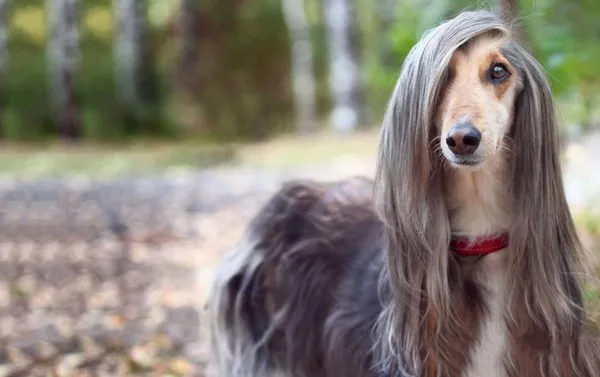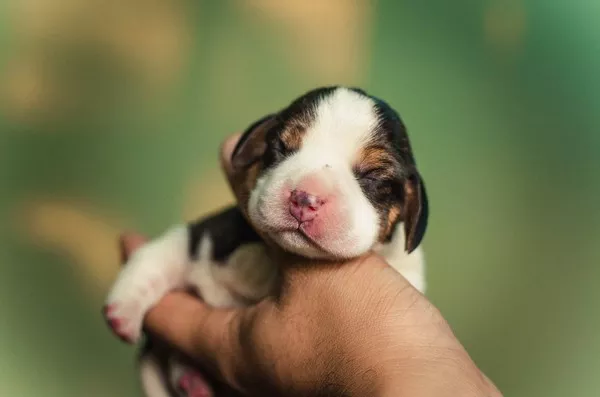When it comes to choosing a dog breed, potential pet owners often find themselves overwhelmed by the vast array of choices available. Among the many breeds, Rottweilers and Mastiffs stand out as two of the most powerful and imposing canines. Both breeds have distinct characteristics, temperaments, and needs, making it essential for prospective owners to understand the differences between them. This article delves deep into the world of Rottweilers and Mastiffs, exploring their histories, physical attributes, temperaments, health concerns, and suitability as pets.
1. Overview of Rottweilers and Mastiffs
Rottweilers
Rottweilers are a medium to large-sized breed with a strong, muscular build. Originally bred in Germany as herding dogs, Rottweilers have also served various roles, including working as police dogs and search-and-rescue dogs. Their intelligence and loyalty make them highly trainable, while their protective nature contributes to their popularity as family guardians.
Mastiffs
Mastiffs, on the other hand, refer to a group of breeds characterized by their massive size and powerful physiques. The most well-known of these is the English Mastiff, but the term also includes breeds like the Bullmastiff, Neapolitan Mastiff, and Tibetan Mastiff. Historically, Mastiffs have served as guard dogs, war dogs, and companions, prized for their loyalty and protective instincts.
2. Historical Background
Rottweiler History
The Rottweiler’s roots trace back to ancient Roman times when they were used to drive cattle and protect their owners. The breed’s name comes from the town of Rottweil in Germany, where these dogs were initially bred. As cities evolved, the need for Rottweilers transitioned from herding to protecting properties and assisting in police work. Their strength, intelligence, and tenacity made them suitable for various tasks, leading to their popularity today as both family pets and working dogs.
Mastiff History
Mastiffs have a rich history that dates back thousands of years. Evidence suggests that they were present in ancient civilizations such as Egypt, Greece, and Rome. These dogs were often used in combat due to their size and strength, and they served as loyal companions to nobles. The English Mastiff, in particular, was bred in Britain for its protective qualities. Over the years, Mastiffs have been bred for various purposes, from guarding estates to serving as gentle giants in family homes.
3. Physical Characteristics
Rottweiler Appearance
Rottweilers are known for their muscular build, broad heads, and distinctive black and tan coat. Their physical attributes include:
Size: Adult Rottweilers typically weigh between 80 to 135 pounds and stand 22 to 27 inches tall at the shoulder.
Coat: They have a short, dense coat that is predominantly black with rust-colored markings on the face, legs, and chest.
Build: Rottweilers possess a strong, stocky frame with a broad chest and powerful limbs, giving them an imposing presence.
Eyes: Their eyes are medium-sized, dark, and expressive, often reflecting their alert nature.
Mastiff Appearance
Mastiffs are among the largest dog breeds, known for their massive size and imposing stature. Key features include:
Size: Adult Mastiffs can weigh between 110 to 230 pounds and stand 27 to 32 inches tall at the shoulder, depending on the specific breed.
Coat: They have a short, coarse coat that comes in various colors, including apricot, brindle, and fawn.
Build: Mastiffs have a broad, powerful body, with a large head and thick neck, contributing to their imposing look.
Eyes: Their eyes are typically dark and soulful, reflecting their gentle nature.
4. Temperament
Rottweiler Temperament
Rottweilers are known for their loyalty, confidence, and protective instincts. Key temperament traits include:
Intelligence: Rottweilers are highly intelligent dogs, making them quick learners. They excel in obedience training and various canine sports.
Protectiveness: Their protective nature makes them excellent guard dogs. They are naturally wary of strangers, which can be a positive trait when properly socialized.
Affectionate: Despite their tough exterior, Rottweilers are known for being affectionate with their families, often forming strong bonds with their owners and children.
Energetic: Rottweilers require regular exercise and mental stimulation to prevent boredom and destructive behavior.
Mastiff Temperament
Mastiffs are renowned for their gentle giants’ nature, displaying a calm and affectionate temperament. Key traits include:
Loyalty: Mastiffs are fiercely loyal to their families and can be protective without being overly aggressive.
Gentle Disposition: Despite their size, Mastiffs are known for their gentle demeanor and love for children, making them excellent family pets.
Calm: Mastiffs tend to be laid-back and calm, often preferring lounging to high-energy activities.
Socialization Needs: While they are generally friendly, proper socialization is crucial to ensure they are well-adjusted and comfortable around other animals and strangers.
5. Training and Socialization
Rottweiler Training
Training a Rottweiler requires a firm but loving approach. They respond best to positive reinforcement techniques, such as treats and praise. Key points include:
Early Socialization: Exposing Rottweiler puppies to various environments, people, and animals is essential for developing a well-rounded adult dog.
Obedience Training: Basic commands and obedience training should start early, as Rottweilers thrive on structure and discipline.
Consistency: Consistent training routines help reinforce desired behaviors and ensure the dog understands expectations.
Mastiff Training
Training a Mastiff can be a rewarding experience, but it requires patience due to their independent nature. Key training strategies include:
Positive Reinforcement: Like Rottweilers, Mastiffs respond well to positive reinforcement. Treats, praise, and play can motivate them during training sessions.
Socialization: Early and ongoing socialization is crucial to prevent any behavioral issues. Introducing them to new experiences can help them become well-adjusted adults.
Gentle Guidance: Mastiffs benefit from a calm and patient training approach, as harsh methods can lead to resistance or fear.
6. Health Concerns
Rottweiler Health Issues
Rottweilers are generally healthy dogs, but they can be prone to certain health conditions, including:
Hip Dysplasia: This is a common genetic condition where the hip joint doesn’t fit properly into the hip socket, leading to arthritis and pain.
Elbow Dysplasia: Similar to hip dysplasia, this condition affects the elbow joint and can cause lameness.
Cardiac Issues: Rottweilers may be predisposed to certain heart conditions, including dilated cardiomyopathy.
Bloat: This life-threatening condition occurs when the stomach fills with gas and twists, leading to a medical emergency.
Mastiff Health Issues
Mastiffs, while generally robust, are also susceptible to specific health problems:
Hip and Elbow Dysplasia: Similar to Rottweilers, Mastiffs can suffer from these joint issues due to their large size.
Heart Issues: Mastiffs can be prone to cardiac conditions, including dilated cardiomyopathy and other heart diseases.
Bloat: Like Rottweilers, Mastiffs are at risk for bloat, especially given their large chests and rapid eating habits.
Skin Issues: Mastiffs can experience skin infections and irritations, particularly in the folds of their skin.
7. Grooming Requirements
Rottweiler Grooming
Rottweilers have relatively low grooming needs, but regular maintenance is still essential:
Coat Care: Their short, dense coat requires brushing once a week to minimize shedding and maintain a healthy shine.
Bathing: Bathing should be done as needed, usually every few months, unless they get particularly dirty.
Nail Trimming: Regular nail trimming is necessary to keep their feet healthy and prevent discomfort.
Dental Care: Regular dental hygiene is crucial to prevent dental diseases.
Mastiff Grooming
Mastiffs also have moderate grooming needs, with some specific requirements due to their size and skin:
Coat Care: Their short coat requires brushing once a week, though they may shed more during seasonal changes.
Bathing: Mastiffs should be bathed as needed, generally every few months, focusing on their skin folds to prevent infections.
Skin Folds: Regular cleaning of the skin folds is necessary to avoid irritation and infections.
Nail Trimming: Like Rottweilers, regular nail trimming is important for their overall comfort.
8. Exercise Needs
Rottweiler Exercise Requirements
Rottweilers are energetic dogs that require regular physical activity to stay healthy and happy. Key points include:
Daily Exercise: Rottweilers should have at least 60 to 90 minutes of exercise each day, including walks, playtime, and mental stimulation.
Structured Activities: Activities such as obedience training, agility courses, and fetch can help satisfy their physical and mental needs.
Socialization: Regular interaction with other dogs and people is vital for their overall well-being.
Mastiff Exercise Requirements
Mastiffs have lower exercise needs compared to Rottweilers but still require regular activity:
Daily Walks: Mastiffs should have daily walks, ideally 30 to 60 minutes, but they are generally less energetic than Rottweilers.
Playtime: While they enjoy playtime, Mastiffs are typically content with moderate activity and lounging around the house.
Mental Stimulation: Providing toys and engaging in training can help keep their minds active.
9. Living Environment
Rottweiler Living Conditions
Rottweilers thrive in environments where they can interact with their families. Key considerations include:
Space: They do well in homes with ample space, whether it’s a house with a yard or a large apartment with regular access to outdoor areas.
Family Interaction: Rottweilers need regular interaction with their families, making them unsuitable for long periods of isolation.
Secure Yard: A secure, fenced yard is crucial for Rottweilers, as they are protective and may be prone to roaming if left unattended.
Mastiff Living Conditions
Mastiffs can adapt to various living situations, but they have specific needs:
Space Requirements: While they can live in apartments, they prefer larger spaces where they can stretch out comfortably.
Indoors: Mastiffs are indoor dogs and should not be kept outside for long periods. They enjoy being with their families.
Heat Sensitivity: Due to their size and heavy coat, Mastiffs can be sensitive to heat, so a cool, shaded environment is essential during warmer months.
Conclusion
Ultimately, both breeds can make wonderful companions, but they come with different needs and temperaments. Prospective owners should invest time in researching and understanding each breed’s characteristics to ensure they choose a dog that fits their lifestyle. With the right care, training, and love, both Rottweilers and Mastiffs can thrive as loyal family members and protectors.
Related Topics:




















